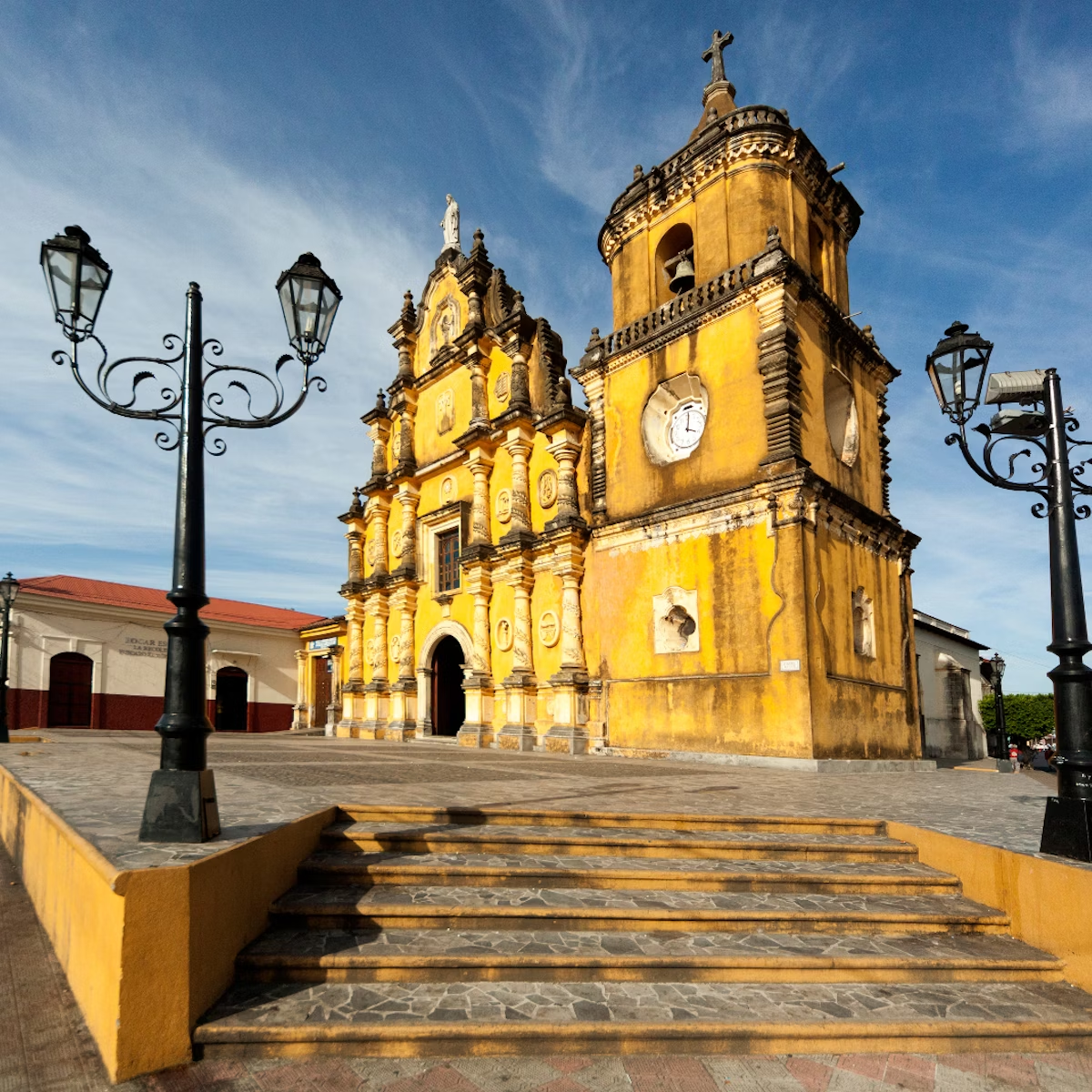Officially known as the BasГӯlica de la AsunciГіn, іўұрГіІФвҖҷs cathedral is the largest in Central America, its expansive design famously (and perhaps apocryphally) approved for construction in much more important Lima, Peru. Leonese leaders originally submitted a more modest but bogus set of plans, but architect Diego JosГ© de Porres Esquivel, the CapitГЎn General of Guatemala (also responsible for San Juan Bautista de Subtiaba, La RecolecciГіn and La Merced churches, among others), pulled the switcheroo and built this beauty instead.
This is the cathedralвҖҷs fourth incarnation. The 1610 original was replaced in 1624 with a wood-and-adobe structure that pirate William Dampier burned to the ground in 1685. Another adobe was used until work began on this enormous вҖҳAntigГјeГұo,вҖҷ Central American baroque-style masterpiece in 1747. Construction, done primarily by indigenous laborers from Subtiaba and Posoltega, went on for more than a hundred years.
The cathedral is a sort of pantheon of Nicaraguan culture. The tomb of RubГ©n DarГӯo, іўұрГіІФвҖҷs favorite son, is on one side of the altar, guarded by a sorrowful lion and the inscription вҖҳNicaragua is created of vigor and glory, Nicaragua is made for freedom.вҖҷ Nearby rest the tombs of lesser-known Leonese poets Alfonso CortГ©s and SalomГіn de la Selva, as well as Miguel Larreynaga.
Among the magnificent works of art within are the Stations of the Cross by Antonio Sarria, considered masterpieces, and El Cristo Negro de Pedrarias, possibly the oldest Catholic image in the Americas, brought here in 1528. Marble statues inside are beautifully crafted, most notably the elaborate Inmaculada ConcepciГіn de MarГӯa.
If itвҖҷs clear, go up on the roof (US$3), with a spectacular view of the city and smoking volcanoes beyond. The office selling tickets for roof access is on the eastern side of the cathedral, facing the market, and you ascend through the tower in the cathedral's northwest corner.

